What is collagen and why is it important?
- Collagen is a peptide that is responsible for your skin’s strength and vigor.
- A deficiency in dietary protein causes reduced cellular turnover, decreased DNA repair, fragmentation of collagen and elastin, and skin wrinkling and laxity.
- Supplementation with hydrolyzed collagen was shown to stimulate collagen-producing cells in humans.
- Daily oral ingestion with collagen hydrosylate of 2.5 grams or more per day, will statistically and significantly increase skin hydration and decrease skin wrinkles.
- So, if firmer skin is your objective, incorporating collagen into your regimen is important.
How do you incorporate collagen into your skincare regimen?
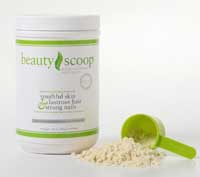 The short answer is…in your diet! Because collagen is a large molecule, and because your skin’s main function is to act as a barrier, topical collagen is not well absorbed into the skin. Interestingly, your body can create collagen, if you consume (and absorb) a lot of proteins. But, according to the Centers for Disease Control, 33% of people over the age of 18 (and this number increases with advancing age and certain medical conditions) have difficulty absorbing nutrients even from a healthy and balanced diet. For these people, supplementation is important both to correct insufficiency and to bypass problems with absorption.
The short answer is…in your diet! Because collagen is a large molecule, and because your skin’s main function is to act as a barrier, topical collagen is not well absorbed into the skin. Interestingly, your body can create collagen, if you consume (and absorb) a lot of proteins. But, according to the Centers for Disease Control, 33% of people over the age of 18 (and this number increases with advancing age and certain medical conditions) have difficulty absorbing nutrients even from a healthy and balanced diet. For these people, supplementation is important both to correct insufficiency and to bypass problems with absorption.
How do you select the right collagen supplement?
- First, you need at least 2.5 grams of collagen hydrosylate, in powder form, consisting of types I and III, per day.
- Types I and III target the skin, hair and nails, while type II primarily target bones and joints.
- Collagen powder should be given in the proper ratio with zinc, manganese and copper for optimal absorption.
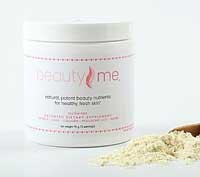 While there are many collagen supplements on the market, only BeautyScoop (for youthful skin, lustrous hair and long, strong nails) and BeautyMe (for healthy, fresh skin on your period) are patented and clinically proven. Each contains 3.5 grams per serving of types I and III collagen (in powder form and in the proper ratio with zinc, manganese and copper for optimal absorption). BeautyScoop’s rapid results are unsurpassed and are clinically proven by ten years of rigorous scientific studies that were double blind, placebo-controlled, randomized, prospective and run by independent doctors. These clinical studies were published in the Journal of Nutrition and Food Sciences.
While there are many collagen supplements on the market, only BeautyScoop (for youthful skin, lustrous hair and long, strong nails) and BeautyMe (for healthy, fresh skin on your period) are patented and clinically proven. Each contains 3.5 grams per serving of types I and III collagen (in powder form and in the proper ratio with zinc, manganese and copper for optimal absorption). BeautyScoop’s rapid results are unsurpassed and are clinically proven by ten years of rigorous scientific studies that were double blind, placebo-controlled, randomized, prospective and run by independent doctors. These clinical studies were published in the Journal of Nutrition and Food Sciences.






























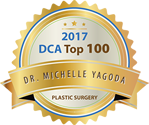
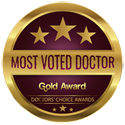
 It looks like a flash drive but it’s called a Juul. A type of e-cigarette, it delivers a powerful dose of nicotine via vaporized liquids, in doses higher than most other e-cigarettes, without the cloying smell and smoke or unpleasant taste of a typical cigarette. After a decade-long decline in teen
It looks like a flash drive but it’s called a Juul. A type of e-cigarette, it delivers a powerful dose of nicotine via vaporized liquids, in doses higher than most other e-cigarettes, without the cloying smell and smoke or unpleasant taste of a typical cigarette. After a decade-long decline in teen  Singers on tour or in a show, men and women of the cloak, radio and TV announcers, inspirational speakers and other
Singers on tour or in a show, men and women of the cloak, radio and TV announcers, inspirational speakers and other  It’s no secret. Americans love sugar. That’s why sugar is in everything. Some say that it is the root cause of an epidemic sugar addiction.
It’s no secret. Americans love sugar. That’s why sugar is in everything. Some say that it is the root cause of an epidemic sugar addiction.
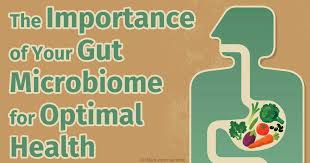 Did You Know? …that your skin is not your body’s largest barrier.
Did You Know? …that your skin is not your body’s largest barrier.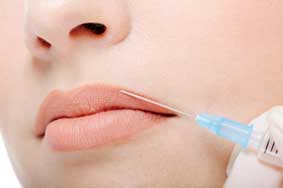 According to a recent study by the American Society for Aesthetic Plastic Surgery, there were nearly 2 million hyaluronic acid filler injections performed in 2015. With immediate rejuvenating results and little-to-no downtime, why not have filler?
According to a recent study by the American Society for Aesthetic Plastic Surgery, there were nearly 2 million hyaluronic acid filler injections performed in 2015. With immediate rejuvenating results and little-to-no downtime, why not have filler?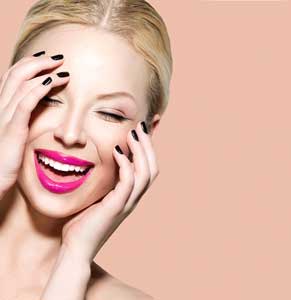 If you mentally filled in the blank with a synonym for derriere, we want you to know that that’s not what we were thinking! Because if laughing caused that, then comedienne Amy Schumer might quite literally be booty-less not booty-licious. Did you know that laughter actually reduces streSS?
If you mentally filled in the blank with a synonym for derriere, we want you to know that that’s not what we were thinking! Because if laughing caused that, then comedienne Amy Schumer might quite literally be booty-less not booty-licious. Did you know that laughter actually reduces streSS?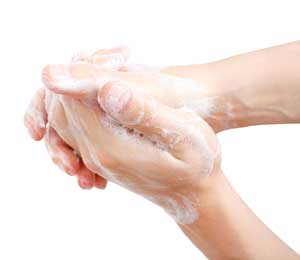 Many people believe that anti-bacterial soaps protect us. This may be in part because consumers are inundated with information from organizations like the Personal Care Products Council, that urges us to believe “that banning anti-bacterial products would increase the level of risk and exposure of the general population to bacteria, leading to increased infection and disease, including 7.5 million cases of food-borne illness and $38 billion in health-care costs annually.” In addition, anti-bacterial soap manufacturers attempt to convince consumers that their anti-bacterial products are “safe and more effective than regular soap.” However, there have been no definitive studies to prove that anti-bacterial products are more beneficial than plain soap and water.
Many people believe that anti-bacterial soaps protect us. This may be in part because consumers are inundated with information from organizations like the Personal Care Products Council, that urges us to believe “that banning anti-bacterial products would increase the level of risk and exposure of the general population to bacteria, leading to increased infection and disease, including 7.5 million cases of food-borne illness and $38 billion in health-care costs annually.” In addition, anti-bacterial soap manufacturers attempt to convince consumers that their anti-bacterial products are “safe and more effective than regular soap.” However, there have been no definitive studies to prove that anti-bacterial products are more beneficial than plain soap and water. As the happiest time of the year approaches, there is one red-nosed reindeer that we all know by name….. Rudolph! Rudolph is an icon of Christmas who is allowed to have a plump, red nose: That is how he saved Christmas, after all!
As the happiest time of the year approaches, there is one red-nosed reindeer that we all know by name….. Rudolph! Rudolph is an icon of Christmas who is allowed to have a plump, red nose: That is how he saved Christmas, after all!